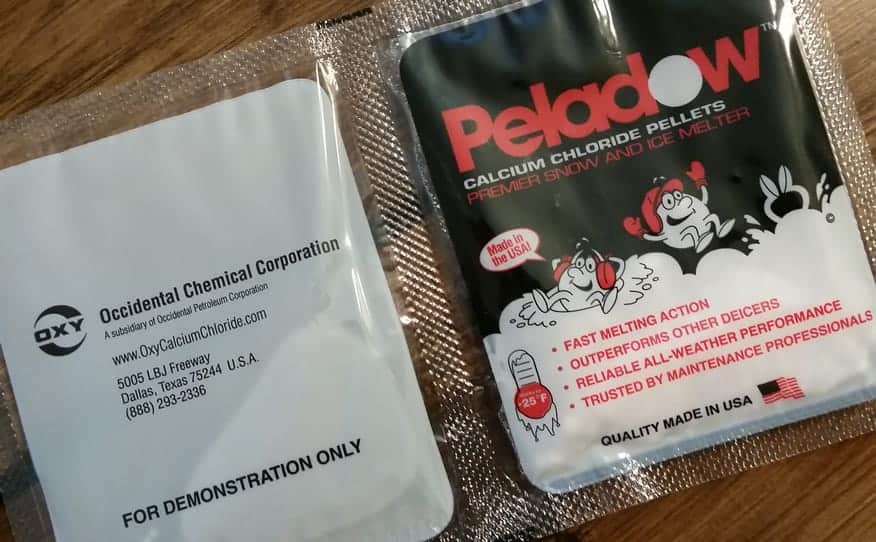As you kick around which ice melt chemicals you should stock up on for next winter, take a close look at an ideal solution for tough winters like in our region of the Mid-Atlantic – Calcium Chloride. Calcium Chloride (CaCl2) is a type of deicing salt available in flake, pellet, and other forms. It can prevent freezing at temperatures as low as -25°F (-32°C), by depressing the freezing point of water – so it’s ideal for Washington DC and Maryland where we are located. The key to its effectiveness is Calcium Chloride produces heat as it melts. It also attracts and holds moisture from its surroundings, which allows it to dissolve faster and begin the melting process.
Additionally, Calcium Chloride enhances rock salt’s effectiveness. Calcium Chloride releases heat, attracts moisture and produces brine. Rock salt, on the other hand, absorbs heat, requires moisture and needs brine to start the melting action. The two combined also means a lower environmental impact than Sodium Chloride alone.
There are various chemicals used to reduce or remove ice hazards. Each compound has its pros and cons.
Here are 10 reasons to start using Calcium Chloride for deicing:
- Calcium Chloride combined with rock salt achieves bare pavement faster than rock salt on its own at temperatures near 30°F (-1°C).
- It attracts moisture and forms brine quicker than other chemicals in low humidity winter environments.
- It speeds up rock salts melting ability by releasing heat as it melts.
- Pellets and flakes dissolve immediately when applied to ice or snow, breaking ice’s bond with the pavement.
- The brine has a long period of activity, preventing ice bonding to roads.
- Calcium Chloride is 5 to 10 times less harmful to plants than rock salt.
- The boost given to Sodium Chloride means using less rock salt, lessening the negative effects on the environment.
- Because it is long-lasting, Calcium Chloride can potentially cut labor costs by eliminating repeated applications.
- Rock salt use is less, cut up to half when used with Calcium Chloride.
- Rock salt’s effective temperature also becomes -25°F (-32°C) when combined with Calcium Chloride.
We carry three products with Calcium Chloride for our snow removal companies to purchase:
If you would like more information about using Calcium Chloride for deicing, or any of our other products, please contact us.

